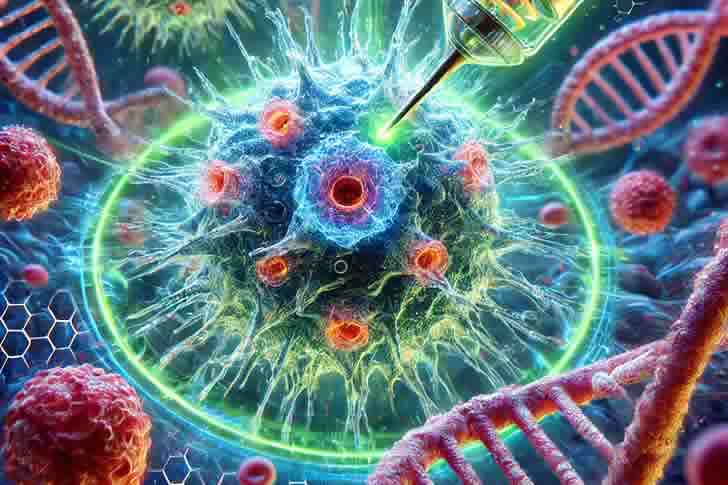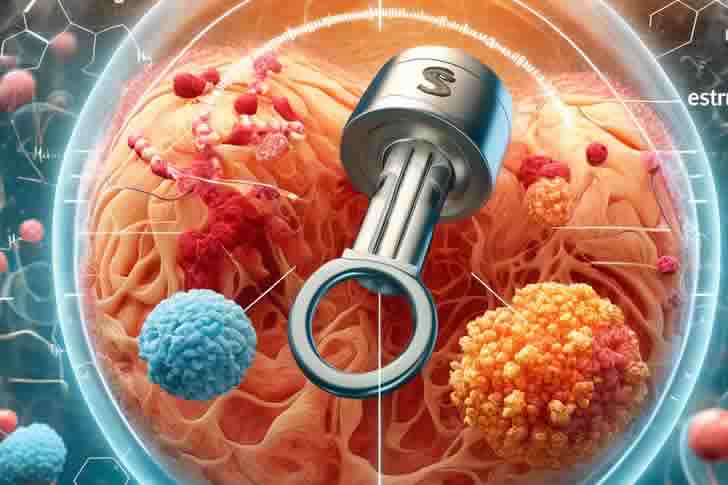Traditional Treatments for ER+ Breast Cancer: Challenges and Opportunities with Immunotherapy
Immunotherapy has revolutionized the treatment of metastatic breast cancer (MBC), offering new hope for patients facing this challenging disease. Recent guidelines have provided updated insights into how immunotherapy can be most effectively used to treat MBC and prevent relapse. This article will explore these latest guidelines, discuss key considerations for treatment.

Estrogen receptor-positive (ER+) breast cancer is the most common subtype of breast cancer, representing about 70-80% of all cases. While traditional treatments such as hormone therapy and chemotherapy have proven effective in managing this disease, they come with significant drawbacks. These treatments often cause serious side effects and are prone to relapse, which can significantly impact a patient’s quality of life. However, recent advances in immunotherapy offer a promising new approach that may enhance treatment efficacy and reduce the likelihood of relapse when combined with traditional therapies.
The Challenges of Traditional Treatments
Traditional treatments for ER+ breast cancer primarily involve hormone therapy and, in some cases, chemotherapy. While these treatments have been successful in reducing tumor size and preventing metastasis, they are not without significant challenges:
- Serious Side Effects: Hormone therapies like tamoxifen and aromatase inhibitors can cause a range of side effects, including hot flashes, fatigue, bone thinning, and an increased risk of blood clots. Chemotherapy, while effective, is known for its severe side effects, such as nausea, hair loss, and an increased risk of infection due to lowered immunity.
- Risk of Relapse: Over time, some ER+ breast cancers can develop resistance to hormone therapies. This resistance can lead to cancer recurrence, often in a more aggressive form that is harder to treat.
- Quality of Life Concerns: The side effects associated with these treatments can severely impact a patient’s quality of life, leading to physical discomfort, emotional distress, and a decline in overall well-being.
Immunotherapy: A New Hope
Immunotherapy represents a revolutionary approach to cancer treatment by harnessing the body’s own immune system to fight cancer cells. In the context of ER+ breast cancer, immunotherapy offers several potential benefits:
- Targeted Action: Unlike chemotherapy, which affects both healthy and cancerous cells, immunotherapy specifically targets cancer cells, potentially reducing the overall side effects.
- Reduced Risk of Relapse: By stimulating the immune system to recognize and attack cancer cells, immunotherapy may reduce the likelihood of cancer recurrence. The immune system, once trained, can potentially recognize and destroy cancer cells even after the initial treatment has ended.
- Improved Quality of Life: Immunotherapy is generally better tolerated than chemotherapy, with fewer and less severe side effects, which can help maintain a higher quality of life during and after treatment.
Combining Immunotherapy with Traditional Treatments
The integration of immunotherapy with traditional treatments, such as hormone therapy, has shown promising results in enhancing the effectiveness of cancer treatment. This combination approach offers a multi-faceted attack on cancer cells:
- Maximizing Treatment Efficacy: Combining immunotherapy with hormone therapy can help target the cancer more effectively by both blocking the hormones that fuel cancer growth and boosting the immune system’s ability to attack cancer cells.
- Synergistic Effects: The combination of therapies can have a synergistic effect, where the treatments enhance each other’s effectiveness, leading to better overall outcomes.
- Personalized Treatment Plans: By integrating immunotherapy with traditional treatments, oncologists can create personalized treatment plans tailored to the specific needs of each patient, potentially improving both efficacy and patient experience.
First-Line Treatment for ER-Positive Breast Cancer
The first-line treatment of ER-positive breast cancer primarily involves hormone therapy, with options tailored based on menopausal status and disease characteristics. In more advanced cases, combination therapies, including CDK4/6 inhibitors or mTOR inhibitors, may be used to enhance the effectiveness of hormone therapy. Chemotherapy is typically reserved for more aggressive cases, while emerging therapies and clinical trials offer hope for those with resistant disease. The overall treatment strategy is personalized, focusing on maximizing efficacy while minimizing side effects, with the ultimate goal of improving survival and quality of life.
Keytruda: Leading the Way in Immunotherapy
Keytruda (pembrolizumab) is a groundbreaking immunotherapy drug that has significantly impacted the treatment of various cancers. As a PD-1 (programmed death-1) inhibitor, Keytruda has shown considerable promise, especially in cancers that are difficult to treat with conventional therapies. By harnessing the body’s immune system to fight cancer cells, Keytruda offers a targeted approach that can lead to improved outcomes and, in some cases, long-lasting remissions.
Professional Analysis and Comparison
Below is a table comparing traditional treatments with immunotherapy in the context of ER+ breast cancer:
| Treatment | Mechanism of Action | Side Effects | Risk of Relapse | Impact on Quality of Life |
|---|---|---|---|---|
| Hormone Therapy | Blocks estrogen receptors or reduces estrogen production | Hot flashes, fatigue, bone thinning | Moderate to High | Can significantly impact daily living |
| Chemotherapy | Kills rapidly dividing cells, including cancer cells | Nausea, hair loss, infection risk | Moderate | Often leads to a decline in quality of life |
| Immunotherapy | Stimulates the immune system to attack cancer cells | Generally mild (fatigue, rash) | Low (potential for long-term control) | Tends to preserve a better quality of life |
| Combination | Integrates hormone therapy with immunotherapy for enhanced efficacy | Side effects depend on specific therapies used | Lower than traditional therapies alone | Can offer improved quality of life compared to traditional treatments alone |
Frequently Asked Questions (FAQ)
Q1: What are the main side effects of immunotherapy in ER+ breast cancer?
A1: Immunotherapy side effects are generally less severe than those of chemotherapy. Common side effects may include fatigue, rash, and mild flu-like symptoms. However, as with all treatments, side effects can vary depending on the specific immunotherapy used.
Q2: Can immunotherapy completely replace traditional treatments for ER+ breast cancer?
A2: Currently, immunotherapy is most effective when used in combination with traditional treatments like hormone therapy. It is not typically used as a standalone treatment for ER+ breast cancer but rather as part of a comprehensive treatment plan.
Q3: How does immunotherapy help prevent cancer relapse?
A3: Immunotherapy works by training the immune system to recognize and attack cancer cells. This immune memory can help prevent the recurrence of cancer by quickly targeting any new cancer cells that appear.
Q4: Is immunotherapy suitable for all patients with ER+ breast cancer?
A4: Immunotherapy may not be suitable for all patients. The decision to use immunotherapy depends on various factors, including the stage of the cancer, the patient’s overall health, and the specific characteristics of the tumor. Oncologists will assess each case individually to determine the best treatment approach.
Conclusion
While traditional treatments for ER+ breast cancer have been the standard of care, they come with significant challenges, including serious side effects and a risk of relapse. Immunotherapy offers a promising new approach that, when combined with traditional treatments, can enhance treatment effectiveness and improve the quality of life for patients. As research continues, the hope is that immunotherapy will become an integral part of the treatment landscape for ER+ breast cancer, providing patients with more effective and less burdensome treatment options.
Sources











Recent Comments